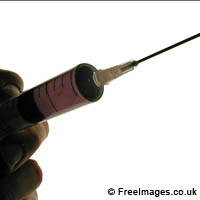German scientists develop foolproof anti-doping test
Sport today is plagued by suspicions that top athletes are taking drugs to enhance their performance. Now a test to identify the presence of one of the most widely used substances - anabolic steroids - has been developed by German and Canadian researchers Anabolic steroids are a class of naturally or synthetically produced hormones that promote cell growth and division, resulting in growth of several types of tissues, especially muscle and bone. Despite being banned by the International Olympic Committee (IOC) during the Olympic Games of 1976, these steroids continue to be used by men and women in many different sports to attain a competitive edge or to assist in recovery from injury. Detecting traces of anabolic steroids such as 19-norandrosterone in urine samples can uncover evidence of abuse. However, tests to detect the presence of this substance have so far been unable to differentiate between hormones that are synthetically produced, and those that occur naturally in the body. For instance, small amounts of the hormone are produced by pregnant women and there is also evidence of a physiological origin of this compound. But research by Moritz Hebestreit and colleagues from the German Sport University in Cologne, in collaboration with the Montréal Anti-doping Laboratory at the Institut Armand-Frappier-Santé, may have provided a solution to the problem. The scientists have now developed a technique that can distinguish between synthetic and natural norandrosterone. The test analyses the ratio of 13 to 12 carbon isotopes in urine samples using a technique called 'gas chromatography combustion isotope mass spectrometry'. Carbon isotope ratio methods are used in doping control to determine whether urinary steroids are endogenous or pharmaceutical. The synthetically produced compound has a lower concentration of the 13C isotope because it is produced from a plant source with intrinsically less 13C than that from normal dietary sources. In other words, a urine sample that is low in 13C compared to a standard of endogenous testosterone indicates doping. The test is able to detect concentrations of 19-norandrosterone as low as 2 ng per ml of urine - the level currently allowed by the World Anti-Doping Agency. This newly developed technique could help to resolve cases where athletes have elevated levels of 19-norandrosterone in their urine but insist that they have never taken steroids.
Countries
Canada, Germany



